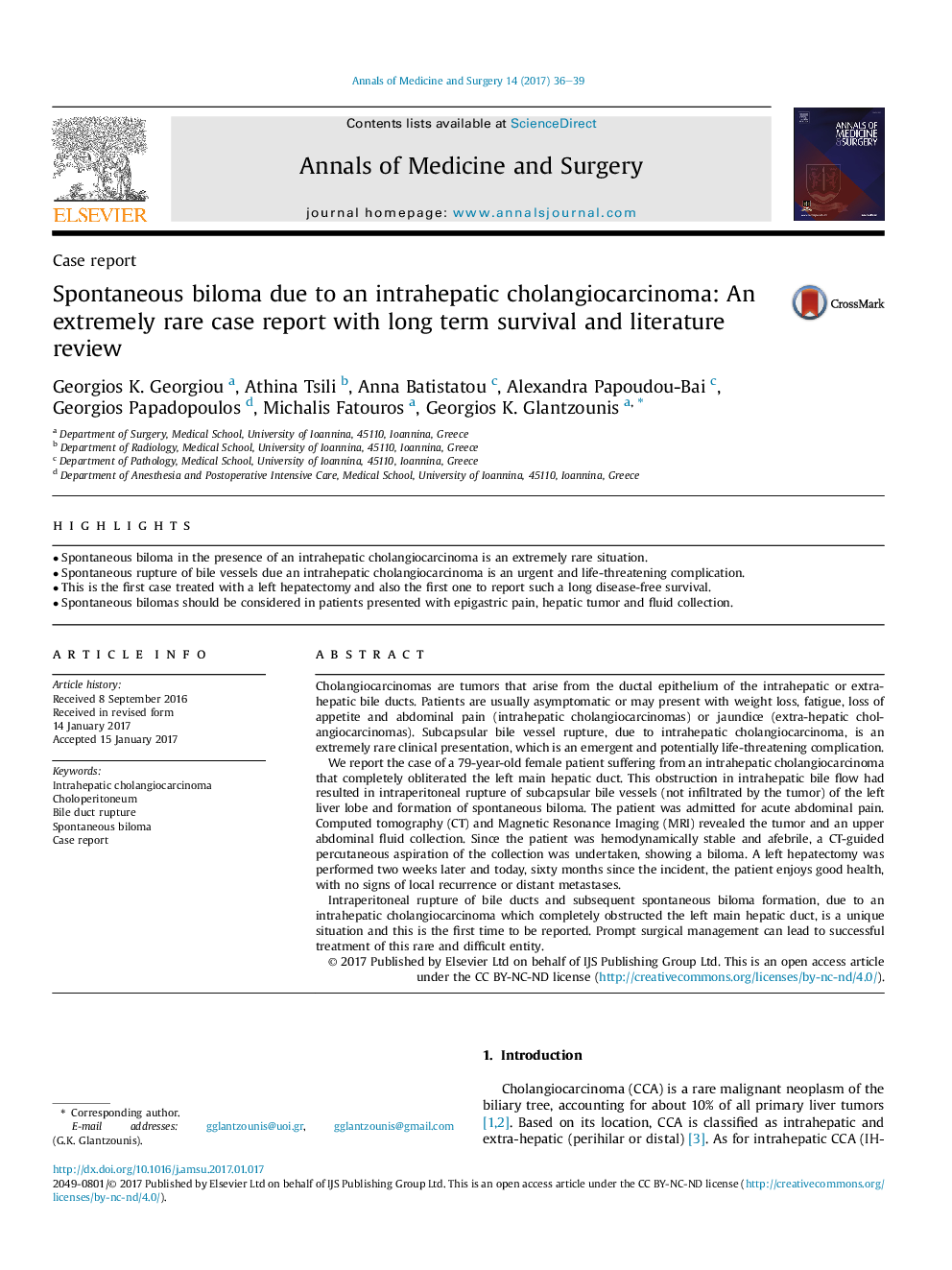| Article ID | Journal | Published Year | Pages | File Type |
|---|---|---|---|---|
| 5723105 | Annals of Medicine and Surgery | 2017 | 4 Pages |
â¢Spontaneous biloma in the presence of an intrahepatic cholangiocarcinoma is an extremely rare situation.â¢Spontaneous rupture of bile vessels due an intrahepatic cholangiocarcinoma is an urgent and life-threatening complication.â¢This is the first case treated with a left hepatectomy and also the first one to report such a long disease-free survival.â¢Spontaneous bilomas should be considered in patients presented with epigastric pain, hepatic tumor and fluid collection.
Cholangiocarcinomas are tumors that arise from the ductal epithelium of the intrahepatic or extra-hepatic bile ducts. Patients are usually asymptomatic or may present with weight loss, fatigue, loss of appetite and abdominal pain (intrahepatic cholangiocarcinomas) or jaundice (extra-hepatic cholangiocarcinomas). Subcapsular bile vessel rupture, due to intrahepatic cholangiocarcinoma, is an extremely rare clinical presentation, which is an emergent and potentially life-threatening complication.We report the case of a 79-year-old female patient suffering from an intrahepatic cholangiocarcinoma that completely obliterated the left main hepatic duct. This obstruction in intrahepatic bile flow had resulted in intraperitoneal rupture of subcapsular bile vessels (not infiltrated by the tumor) of the left liver lobe and formation of spontaneous biloma. The patient was admitted for acute abdominal pain. Computed tomography (CT) and Magnetic Resonance Imaging (MRI) revealed the tumor and an upper abdominal fluid collection. Since the patient was hemodynamically stable and afebrile, a CT-guided percutaneous aspiration of the collection was undertaken, showing a biloma. A left hepatectomy was performed two weeks later and today, sixty months since the incident, the patient enjoys good health, with no signs of local recurrence or distant metastases.Intraperitoneal rupture of bile ducts and subsequent spontaneous biloma formation, due to an intrahepatic cholangiocarcinoma which completely obstructed the left main hepatic duct, is a unique situation and this is the first time to be reported. Prompt surgical management can lead to successful treatment of this rare and difficult entity.
